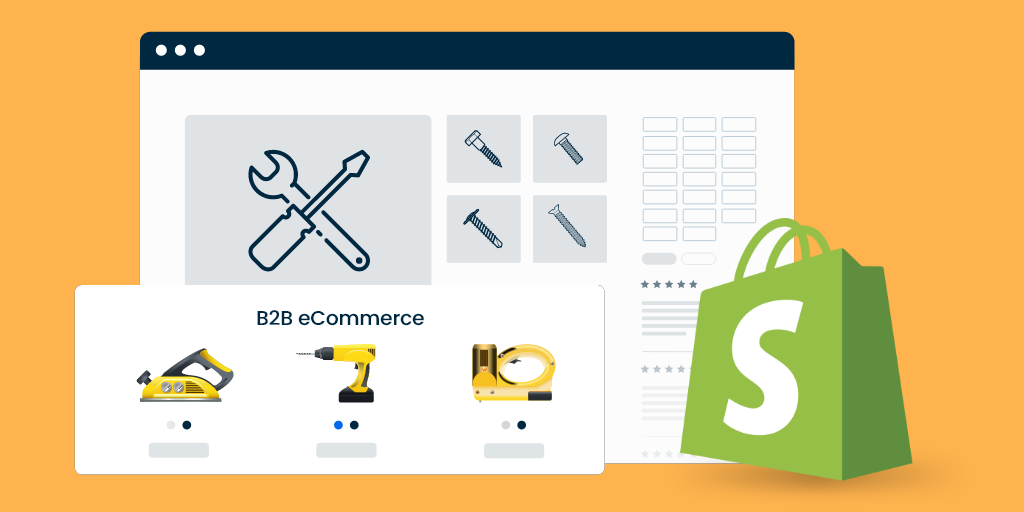B2B eCommerce Food and Beverage – Industry Trends, Opportunities, Challenges, and Solutions

While eCommerce was already evolving major industries, businesses in the Food and Beverage industry were the slowest to react. Given the unique challenges faced in Food and Beverage eCommerce, both businesses and consumers felt comfortable buying and selling the traditional way. But that seems like long ago now.
2020 changed everything. The pandemic dragged everyone online – whether it’s someone buying groceries for their home, ordering a coffee during their lunch break, or a restaurant getting their supplies so they can smoothly fulfill orders without running out of ingredients.
All the giants in the B2B food industry like PepsiCo, Coca Cola, and General Mills have moved online and are already seizing the opportunity there.
To put it bluntly, it’s a situation where you either ‘Evolve or die’.
This post will present a case for eCommerce in the B2B Food and Beverage Industry. It will also guide you through the nitty-gritty of setting up a web portal that opens massive opportunities of business growth.
Read on or skip to the parts you find most interesting.
Table of Contents:
Trends and Opportunities in B2B Food and Beverage
Here are some numbers we scraped from the internet that would help you guide your eCommerce decision-making.
- According to Statista, online sales will make up 15-20% of the food and beverage industry’s overall sales by 2025, which is 10x more than it did in 2016.
- Overall revenue from online food and beverage sales in the US is predicted to exceed $27 billion by 2023.
- 64% of successful companies within the food and beverage industry had developed an eCommerce strategy.
- New business models like B2B2C and D2C are growing in popularity in the food and beverage industry.
How eCommerce can explode the Growth of B2B Food and Beverage Companies
The numbers are convincing for sure. When most of your competitors are doing something, it’s good enough reason to follow the trend lest you are left behind.
Still, it’s also worth looking at the bigger picture of what you can achieve with a B2B eCommerce channel.
1 – Meet the Changing Needs of your Millennial Customers
The number one benefit an eCommerce channel brings is the ability to meet your customer’s needs. Your customers are what your business pivots on. If you lose the customer, you lose everything.
And it’s worth mentioning again that your customer is changing – or better, has changed already. Your business buyers are no longer the people who preferred to buy in person. If you talk about the demographics, your customer has changed. The people responsible for business buying today are digital natives – the people who like to buy on Amazon and eBay for their homes. And these people prefer digital over traditional channels.
To say the least, you must shift and evolve to meet those new customers’ demands or fear becoming irrelevant.
For a real-world example of a brand that has adeptly maneuvered through the dynamic landscape of the food and beverage industry, check out our article on How Jake & Nayn Built a Successful Food Brand That’s Stocked in Over 6000 Stores in the UK.
2 – Meet the Changes Brought by the Pandemic
The pandemic is another reason why b2b food and beverage companies need to act fast and evolve. The pandemic caused demands in food and beverage to skyrocket. We’ve witnessed it ourselves – supermarkets running out of food and other staples.
It wasn’t just the consumer’s increasing demand to be met. Supply chains also got disturbed due to lockdowns, which just multiplied the challenges.
A B2B eCommerce platform can ease some of those problems and take the burden off businesses that are already struggling with supply and demand.
By giving a convenient, self-service portal for B2B e commerce food and beverage where buyers can place an order any time of the day without waiting for a salesperson to take the order, businesses can improve efficiencies and speed things up.
3 – Acquire More Customers and Increase Sales with Digital B2B Food Marketing Channels
A B2B eCommerce website can open the doors to many modern channels for B2B marketing food industry – like PPC and SEO. You can use those digital marketing channels to acquire more customers in your B2B food and beverage business without increasing your sales force.
A B2B eCommerce channel will also help your salespeople sell more. As it frees up your salespeople by allowing customers to self-serve, your sales force can instead focus on building and fostering new and existing relationships and doing what matters instead of manually taking orders.
An e-Commerce food and beverage store also allow your customers to look over your entire catalog and buy products that they previously didn’t know you offered.
It also allows you to use techniques like upselling and cross-selling, which previously wouldn’t have been feasible for salespeople when selling in person.
4 – Opportunity for DTC Selling in Food and Beverage eCommerce
The pandemic caused a surge in the demand for home delivery services. Retail chains like Walmart, Kroger, and Whole Foods struggled to keep up and their logistics capacity was overwhelmed.
This created a new opportunity for B2B beverage and food manufacturers to sell direct to consumers, cutting out the middleman and quickly servicing customers.
With an f&b eCommerce website, manufacturers can sell both B2B and DTC – having both channels on one platform. This creates a massive opportunity to increase B2B food sales and generate higher revenues.
Unique Challenges in the B2B eCommerce Food Industry
There is a reason why the Food and Beverage industry had been so slow to eCommerce adoption as opposed to other industries. It’s the challenges that are unique to this industry that creates an obstacle for businesses to go digital.
Let’s discuss those eCommerce food industry challenges in detail and then look over their solutions.
1 – The Need for Faster Delivery
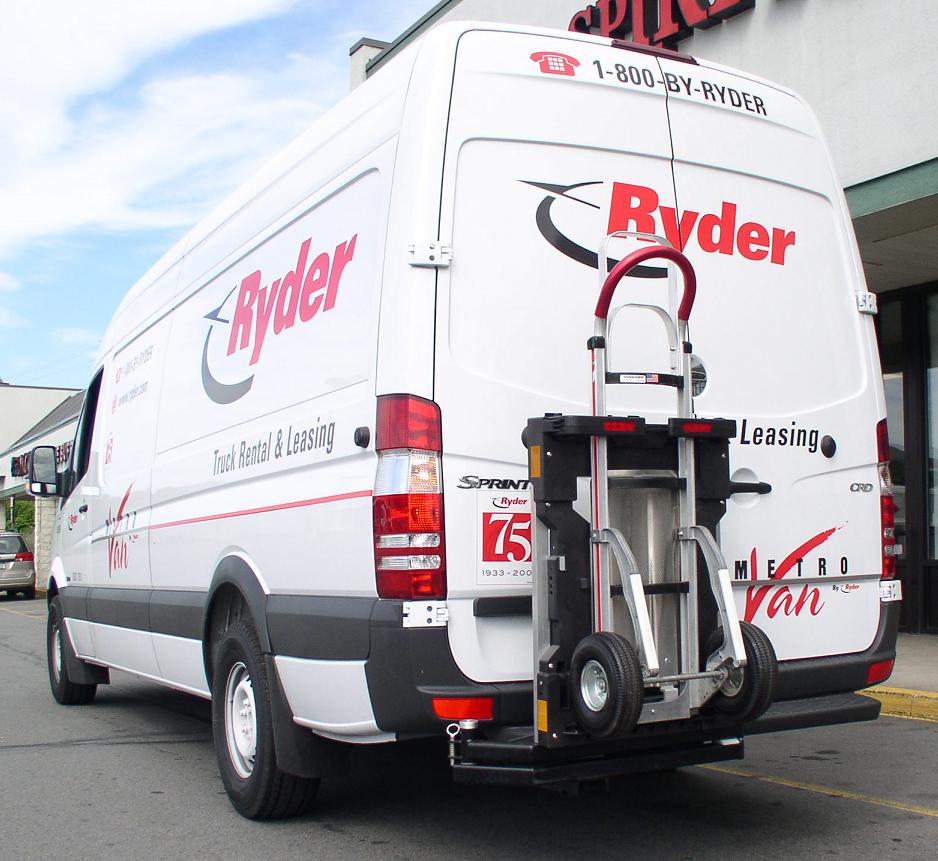
If there’s one thing that differentiates the food and beverage industry from others is the average delivery time. In other industries, having faster delivery is counted as a premium. In food and beverage, it’s a must.
Whether you’re delivering direct to consumers or to other businesses like restaurants or retailers, delivery timelines are critical. Your business buyers need deliveries made within a certain time to meet their own cut-off times for next-day trading.
Apart from that, ‘Use by’ and best before dates are also what make delivery turnaround times crucial. Delivering close to or past the expiration date will damage your business.
Hence, managing your logistics and improving efficiencies in this department is critical if you’re planning to go digital.
2 – Complex Pricing Structures
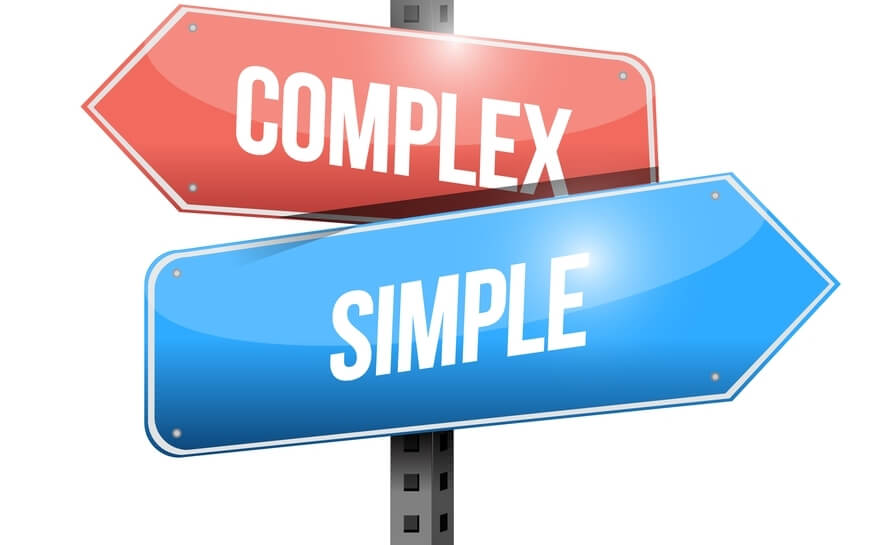
Pricing varies on so many levels – quantity ordered, seasonal promotions, price fluctuations because of changes in supply and demand. Plus, you might have quoted a different price to a supermarket than to a restaurant. This complicates things for a food and beverage business trying to go digital.
3 – Transparency in Inventory and Logistics

Because of the need for faster delivery, your customers want complete transparency regarding inventory and logistics. And as a business, you need that headspace too. You wouldn’t want your customers to place an order for something that’s out of stock.
Hence, all your systems need to be synced together so that there is clarity on what’s available and when it will be delivered.
Analyze Your Typical Food and Beverage Customer Journey
Your first step in creating a strategy for B2B eCommerce is to first analyze your customer’s buying process. Each business functions in its own way with its own unique culture, internal processes, and needs.
In B2B, each of your customers isn’t an individual but a separate business of its own. Hence, each of your customers will have their own unique buying journey. This is what makes B2B eCommerce so complex.
To start off, you need to analyze your customers.
Pick some of your biggest accounts and analyze what their requirements are.
In the beginning, when you’re starting out, you can’t cater to all of them. You need to come up with the best solution that caters to most customers’ needs and then continue to improve and roll out new features so that all your customers’ needs are met.
Create a Requirements Document that lists all the features you would need in your DTC or B2B food commerce platform.
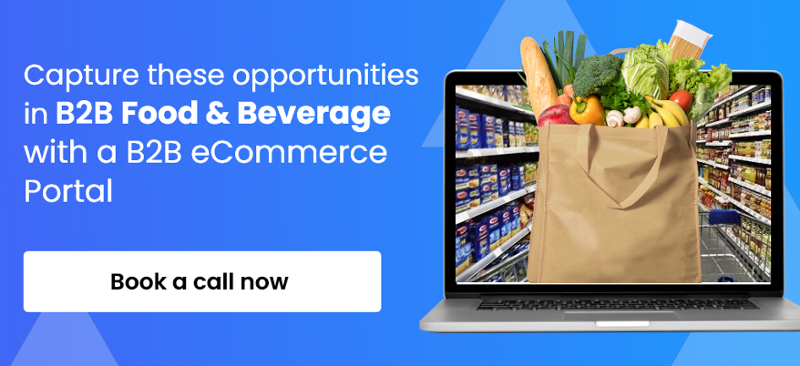
Features to Look For in a B2B Food and Beverage Commerce Platform
While this food and beverage eCommerce features list would be different for every B2B food business in the industry, here are some general features to look out for.
- Integration with your ERP, PIM, Logistics and Other Systems
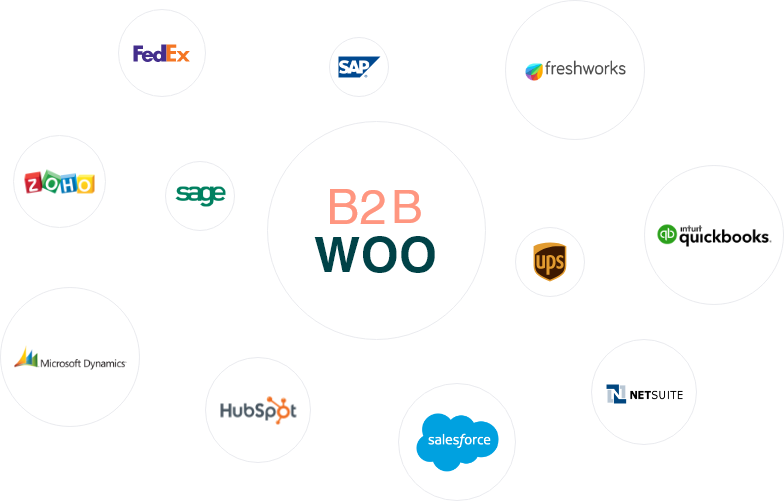
Integration of the eCommerce website with your ERP, Procurement and other systems allows for automated inventory management, real-time order processing and invoicing, and the ability to update pricing from a single unified system.
If you’re serving large-scale companies, you might even need your eCommerce platform to integrate with your customer’s procurement system. In technical terms, it’s called Punch Out.
- Find-a-Store Functionality
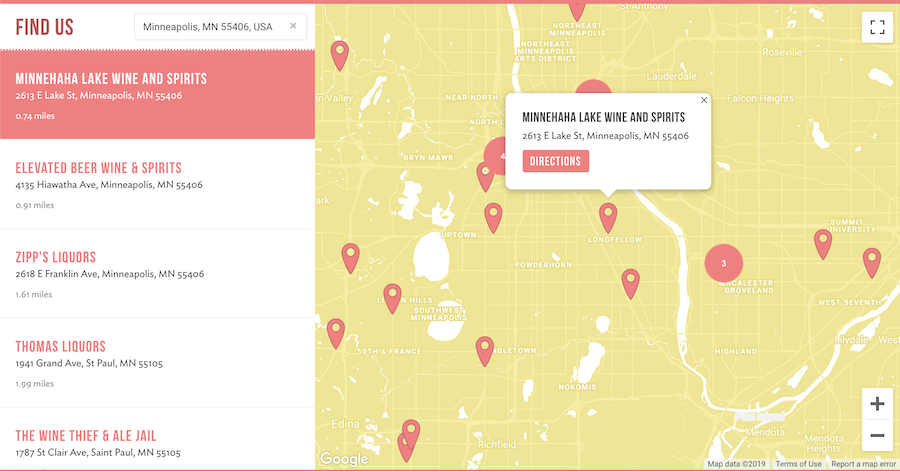
Brick and mortar will never die and this feature in your eCommerce food & beverage websites brings your customers to your door.
- Robust, Media-Rich Product Pages

Customers want complete transparency related to nutrition information and other product information. Make sure the B2B food and beverage commerce platform allows you to build detailed Product Pages.
- Loyalty Program
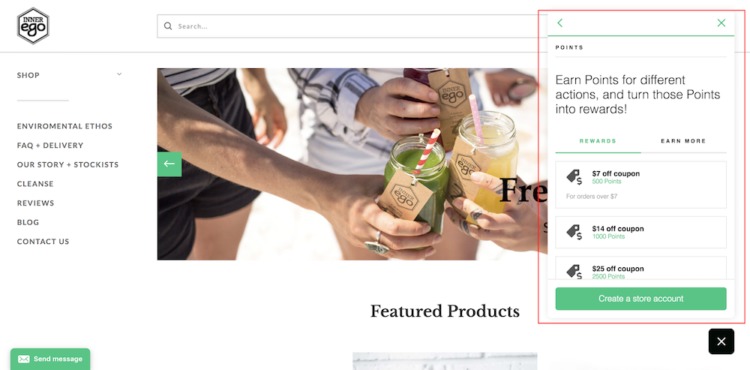
This feature allows you to offer reward points, personalized coupons, and promotions to your customers as part of your B2B food marketing strategies.
- Customized Pricing Structures
Make sure the B2B eCommerce platform allows you to customize pricing structures based on different factors like quantity ordered, geolocation, and even on the individual customer level where you can set a price for a particular customer account.
- Self-service account management
As mentioned above, your business buyers will each have their own internal business processes and will need to manage their own accounts. Let them manage their account with self-service capabilities.
With permission-based role and account management features, you can allow your customers, say a restaurant, to add an Account Manager and a Chef and assign them different permissions. For example, it allows the chef to create an order that goes to the Account Manager for review and approval.
- Multi-lingual and Multi-currency support for international sales

If you’re planning to expand internationally, your website needs to have multi-lingual and multi-currency support.
- Multiple Ship-to Addresses

It’s common for companies in the food and beverage industry to have multiple locations. Your eCommerce platform should have the feature that allows a head office to place orders for deliveries to multiple locations, with addresses saved in their account.
- Subscription Functionality

To improve the customer experience, the eCommerce platform should allow your customers to subscribe to their orders if needed so they can get the order delivered right on time.
- Reorder Functionality
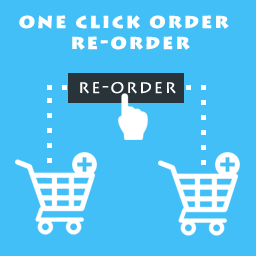
A simple reorder functionality can also improve the customer’s experience and allow them to place a past order with a click of a button.
Want to create a B2B eCommerce channel for your Food and Beverage Company? Codup is a leading B2B eCommerce solutions provider. Talk to us about your business needs today!

Read Also
- How eCommerce Adoption Benefits B2B Healthcare Providers and Device Makers
- How To Sell Auto Parts Online – The Ultimate Guide to Automotive eCommerce
- 6 Practical Tips to Cut Costs for Your Ecommerce Store
- 6 Tactics To Improve Your eCommerce Conversions Through Referral Marketing
- Optimizing Conversion Rate On Your eCommerce Store
- 8 Ways An eCommerce Website Can Improve Your Business


